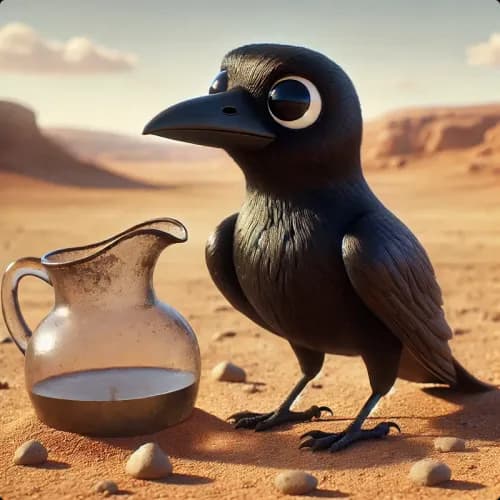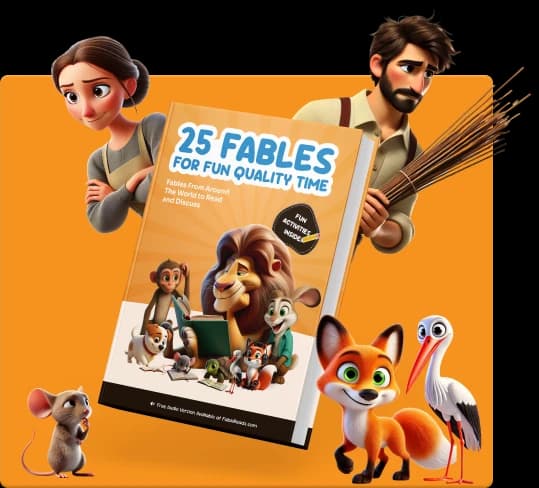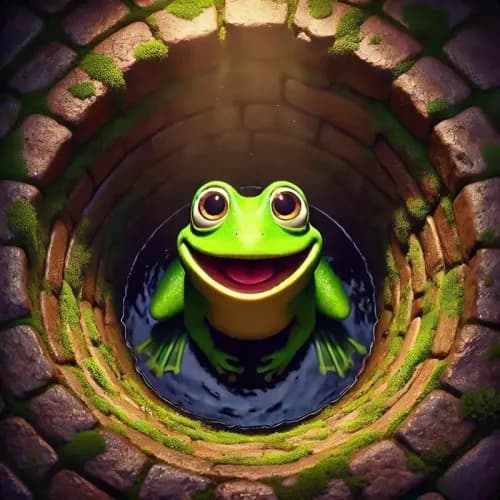Aesop | Greece
El Cuervo y la Jarra
Un cuervo sediento usa piedras para elevar el agua en una jarra, mostrando ingenio para saciar su sed.

En una zona seca, un cuervo buscaba agua porque tenía mucha sed. Voló sobre tierra y finalmente encontró una jarra con un poco de agua en el fondo.
El cuervo quería beber, así que intentó meter su pico en la jarra. Pero la jarra era demasiado profunda y estrecha como para que el cuervo pudiera alcanzar el agua. Intentó muchas veces sacar el agua, pero no pudo.
El cuervo pensó en voltear la jarra para obtener el agua, pero la jarra estaba atascada en la arena, así que no fue posible.
Aún queriendo beber, al cuervo se le ocurrió una idea. Vio unas piedras pequeñas cerca de la jarra. El cuervo recogió una piedra con su pico y la dejó caer en la jarra.
Cada piedra hacía que el agua subiera un poco. El cuervo siguió añadiendo piedras, y poco a poco, el nivel del agua subió lo suficiente como para que pudiera beber.
Finalmente, el cuervo pudo beber el agua. Se sintió muy feliz y orgulloso de ser tan ingenioso.
Compra un Libro y Ayuda a Llevar Fábulas al Mundo
Disfruta de 25 fábulas seleccionadas de por vida, impresas. Cada compra apoya historias gratuitas para niños, padres y maestros en todo el mundo en fablereads.com

















